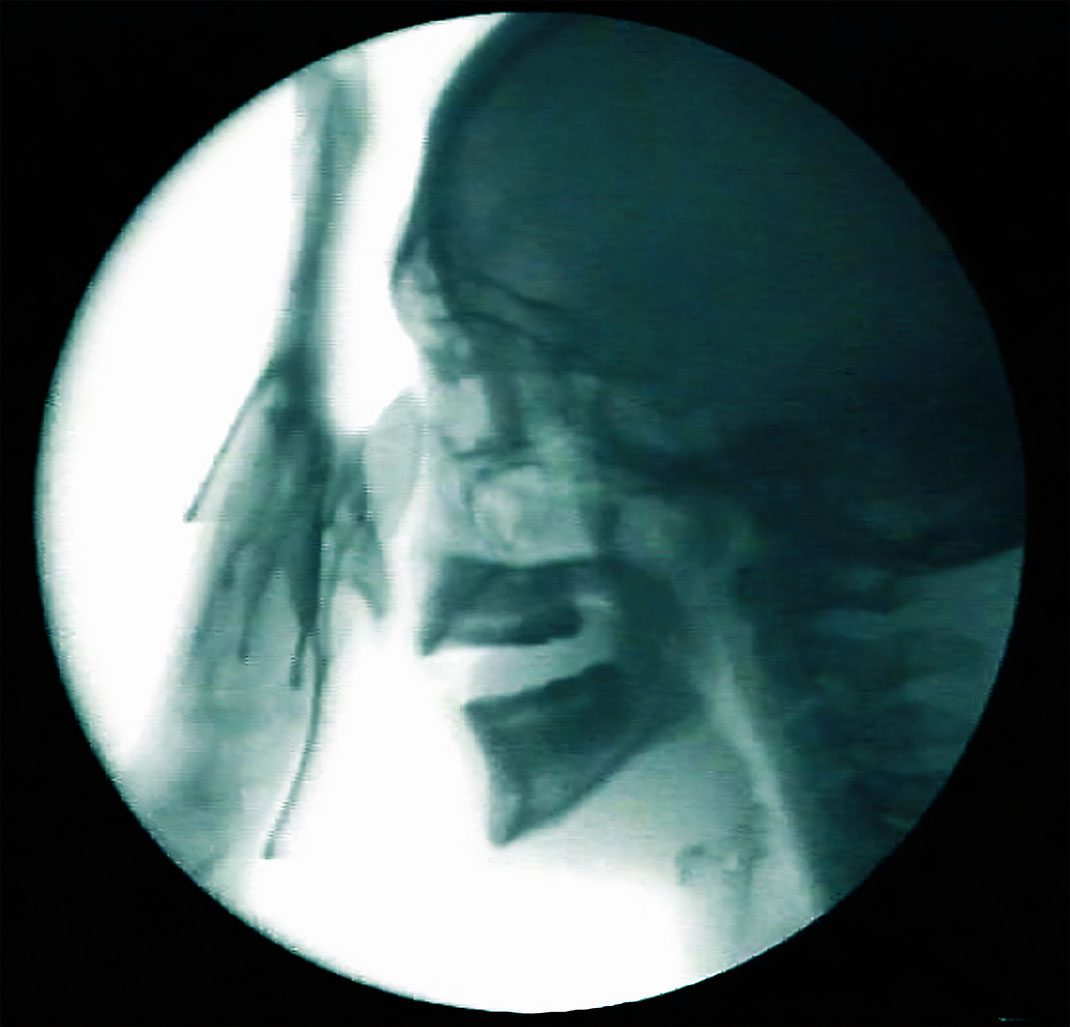- Current projects
- Selected Works
- Häutungen und Metamorphosen
- Ex vivo - in vitro
- Sammlung Reinking Hamburg 2011
- Kunstmuseum Bern 2013
- Kunsthaus Zofingen 2017
- Mess Up Your Mind
- Mon crâne retrouve son propre visage
- Kunstgeschichte kitzelt
- Ataraxie & Eudaimonia
- Choreography Bern Ballett 2007
- Kunsthalle Bern 2006
- Aargauer Kunsthaus 2021
- Ali Baba und die 40 Kunstkritiker
- Alphons Silbermann 1999
- Art and War 2003
- Weserburg Bremen 2014
- Kunstverein Ruhr 2015
- Echo and Narcissus 2012
- Facing History 2019
- Rede mit mir
- The Artist
- Bibliography
- Lectureships
- Contact
Unsere widersprüchliche Existenz in jener Zeit, die wir Gegenwart nennen
Das Skelett eines menschlichen Schädels, das sich lebhaft bewegt und uns aus seinen knochigen Augenhöhlen anschaut, wirkt beängstigend und irritierend. Leibhaftig ein Totenschädel, lebendig? Das unkonventionelle Selbstportrait in Röntgendurchleuchtung ist in die klassisch anmutende Form eines Medaillons gefasst und verweist damit auf die Bildcharakteristik von Trauerschmuck aus den Nachkriegsjahren. Doch Frantiček Klossners Videoperformance ist ein Memento mori voller Selbstironie und spürbarer Lust am künstlerischen Experiment mit bildgebenden Medien aus der Medizin. Die beklemmenden Assoziationen werden deutlich kontrastiert von hintersinnigem Schalk und schwarzem Humor. Der Tod scheint uns sagen zu wollen, dass das Leben nach dem Tod genauso sinnlich und skurril sein wird, wie unsere widersprüchliche Existenz in jener Zeit, die wir Gegenwart nennen. (Léonard Cuénoud, Kunsthistoriker, Katalogtext in "Mess Up Your Mind", 2000)

«Mon crâne retrouve son propre visage», Autoportrait en radioscopie, Vidéo en temps réel sous fluoroscopie, Peinture faciale avec du liquid contraste médical, Frantiček Klossner, 1999, Imagerie radiographique en collaboration avec l'Institut de radiologie de l'Université de Berne

Ausstellungsansicht «Danse Macabre», Museum für Kommunikation Bern, 2016, Werke aus der Sammlung Ketterer-Ertle: «X-ray of My Skull», Meret Oppenheim (1964) und «My Skull encounters its own Face», Frantiček Klossner (1999)

Das Staunen ist die Einstellung eines Menschen, der die Weisheit wahrhaft liebt; es gibt keinen anderen Anfang der Philosophie als diesen. Platon

Our contradictory existence in that time we call the present: The skeleton of a human skull, moving vividly and looking at us from its bony eye sockets, has a frightening and irritating effect. In the flesh a skull, alive? The unconventional self-portrait in X-ray fluoroscopy is set in the classical-looking form of a medallion, referring to the pictorial characteristics of mourning jewelry from the postwar years. But Frantiček Klossner's video performance is a memento mori full of self-irony and palpable pleasure in artistic experimentation with medical imaging media. The oppressive associations are clearly contrasted by sly mischievousness and black humor. Death seems to want to tell us that life after death is as sensual and whimsical as our contradictory existence in that time we call the present. (Léonard Cuénoud, Art historian, catalog text in "Mess Up Your Mind," 2000)

«Mein Schädel verleiht sich ein Gesicht», Fluoroskopie, Selbstportrait, Echtzeit-Video in Röntgendurchleuchtung, Gesichtsbemalung mit medizinischem Kontrastmittel, Frantiček Klossner, 1999, X-ray imaging in Zusammenarbeit mit dem Institut für Radiologie der Universität Bern

«My skull discovers its own face», Real-time video in X-ray fluoroscopy, Self-Portrait, Facial painting with medical contrast medium, Frantiček Klossner, 1999, X-ray imaging in collaboration with the Institute of Radiology, University of Bern
